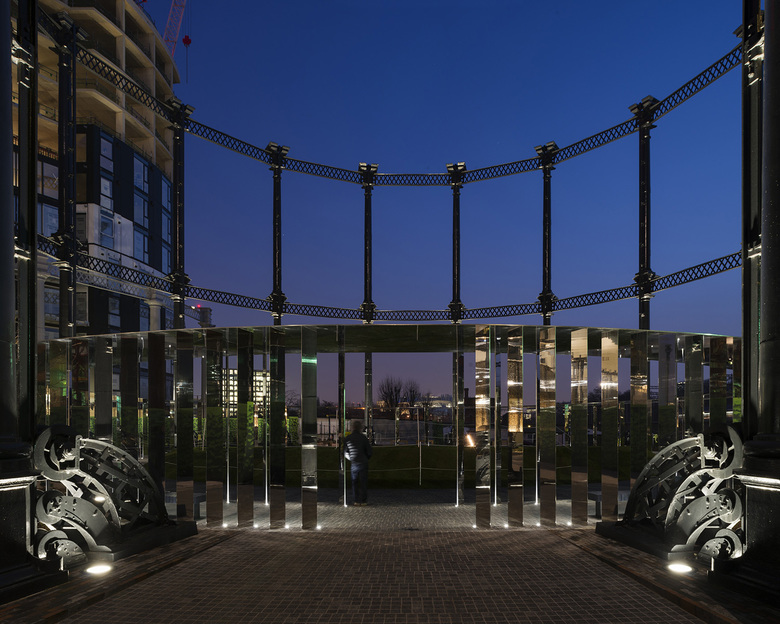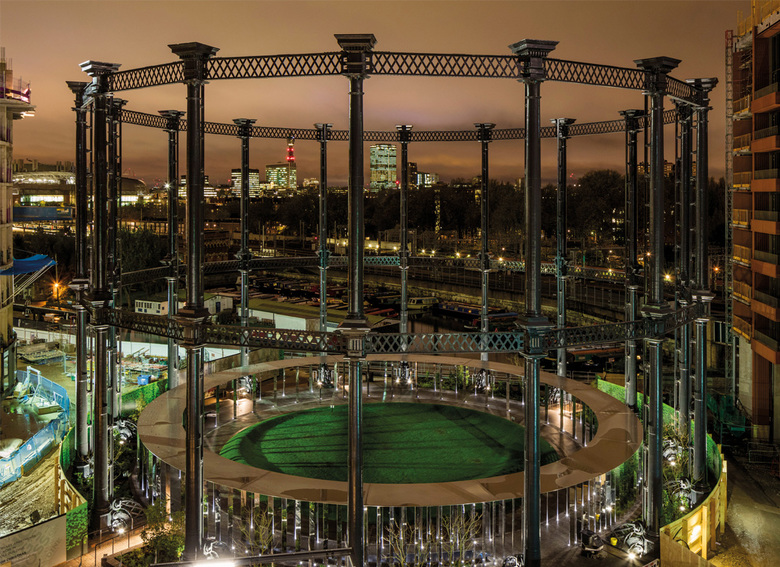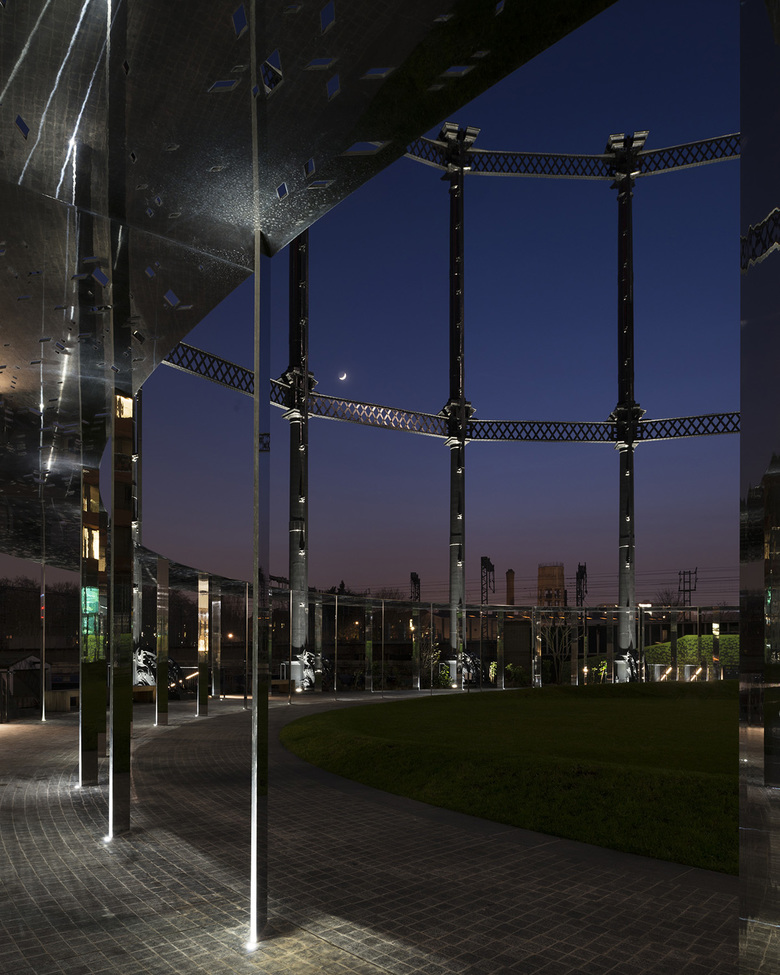Lighting a 'Dark Park' at King's Cross
Gasholder No. 8 is a historic cast iron structure that has been transformed into Gasholder Park as part of the huge King's Cross development in London. A subtle yet dramatic lighting design by Speirs + Major ensures the striking structure has a strong presence at night.
Gasholder No.8 was built in the 1850s, expanded in the 1880s, and then decommissioned in 2000. Designed to store gas for the Pancras Gasworks, the frame was made from 16 hollow cast iron columns in two levels that were joined by wrought iron lattice girders. At 25 meters high and 35 meters in diameter, it is a large structure, but one that has a human scale thanks to the Victorian details. After the Grade II listed structure was decommissioned, it was dismantled, refurbished, and then rebuilt on the north side of Regent's Canal. It serves as a park and event space following Bell Phillips Architects' 2008 competition-winning design, which placed a circular lawn and stainless steel colonnade within the old structure.
Speirs + Major, which master planned the lighting scheme for the whole King's Cross development, was responsible for the lighting of both the old gasholder structure and the new intervention. According to designer Philip Rose:
The lighting is designed to ensure that park users feel safe and secure as natural light fades, but we also wanted the design to make the most of the uniquely juxtaposing materiality and forms of the new park. The circular layout led us to the idea that we could use light to create both a beautiful nighttime landmark, as well as an enlivening immersive experience, inspired by the idea of a solar eclipse.
Solar eclipse as a design concept makes sense given the circular form of the gasholder, but it also points to the use of less light rather than more. As described by Mark Major in a lecture at the recent Light Symposium Wismar 2016, the firm often provides light levels that are lower than what's expected, particularly in regards to safety. Increased light levels do not make safer environments, the contrast from too much light affects the experience of the night, and, as is well known, too much light at night has caused the loss of the night sky in urban areas. The low light levels at Gasholder Park do two things: they allow the space to be used for events at night, and they put the emphasis squarely on the details of the old structure, all the while maintaining its dark presence.
The "dark park," as Major called it in his lecture, is illuminated almost exclusively through uplights. At the stainless steel canopy, with its tight rhythm of mirrored supports, the uplights reflect back onto the path to create what the firm describes as a "corona effect." For the historic gasholder, the cool white lights grazes the structure, as if to highlight just particular details: the lattice beams, the flared tops, the connection points, and the complex bases.
On top of the basic framework of lights, the lighting is programmed to shift over twenty minute cycles in line with the solar-eclipse theme. It starts with all of the lights turned on and then fades down gradually every three minutes. A two-minute pause at the halfway point symbolizes a total eclipse, after which the lights fade up gradually to full brightness again. If that weren't enough, the timing of the light cycles changes according to the lunar calendar. In turn, the lighting of the "dark park" subtly puts people into the celestial rhythm that an overabundance of nighttime lighting has washed away.
PROJECT DETAILS
Client
Argent
Architect
Bell Phillips Architects
Landscape Architect
Dan Pearson Studio (Planting), Townshend Landscape Architects
Lighting Design
Speirs + Major (Mark Major, Philip Rose, Andrew Howis)
Engineer
Arup + Hoare Lea
Main Contractor
Carillion
Electrical Contractor
Michael J Lonsdale
Major Suppliers
Photonstar, We-ef, Mike Stoane Lighting and Control Lighting





